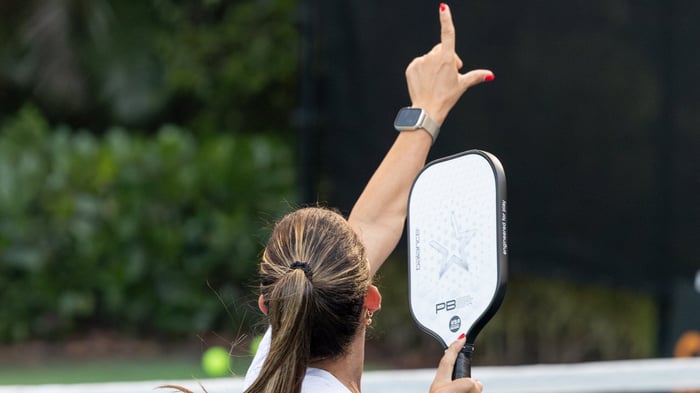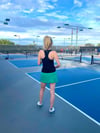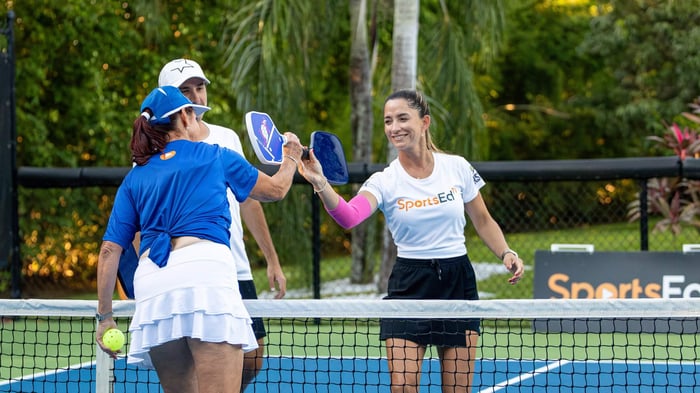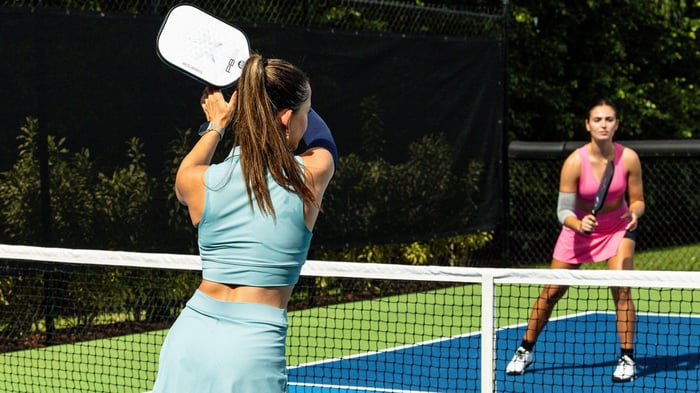Key takeaways:
Smart use of angles helps you stretch the court and force your opponent into tough positions without needing extra power.
Consistent practice and good footwork make angled shots safer and more effective during real games.
Good footwork and quick recovery are essential for hitting angles consistently and staying in control of the point.
A sharp angle can be the difference between winning a rally and watching the ball sail past you. Smart pickleball players know that good shots aren’t just about power but about placing the ball where your opponent least expects it. This is where understanding the court’s geometry truly gives you an edge.
When you learn how to work with angles, every shot becomes a chance to dictate the pace and direction of play. It’s a skill that turns a casual player into a crafty strategist on the court. At PB5star, we believe mastering this subtle part of the game makes every match more fun and competitive.
In this guide, you’ll pick up tips for hitting smarter angled shots, positioning yourself for success, and practicing techniques that sharpen your precision. Let’s get into it.
Why angles matter in pickleball
Angles aren’t just flashy tricks—they’re a smart way to break your opponent’s rhythm and claim control of the rally. Here’s why learning to shape your shots matters so much:
Stretch the court: A well-placed sharp angle pushes your opponent far off to the side, forcing them to cover much more ground than they’d like. This extra distance often leads to weaker returns.
Open high-percentage targets: Once you pull them wide, you can redirect the next shot easily to the middle or the opposite corner. This makes it hard for your opponent to guess where you’ll hit next.
Manage pace without brute force: Smart angle play allows you to change rally speed and placement instead of swinging harder. This keeps you in control without wearing yourself out.
Force tough footwork: Hitting into sharp angles makes your opponent adjust their feet quickly and reach awkward balls, increasing their chances of errors.
Set up easy finishes: By moving your opponent around, you’ll find more chances to hit clean winners into the open court when they’re off-balance.
Knowing how to use angles makes every shot work harder for you, turning regular rallies into smart tactical battles.
Key types of angled shots
Angles come into play in many different shots, and knowing which ones to use can really step up your game. Let’s break down some of the most effective angled shots you can add to your game plan.
Cross-court shots
Cross-court shots give you the biggest window to hit into and help keep the ball away from your opponent’s strength. They’re a safe way to add depth and width to your shots at the same time. A strong cross-court habit forces your opponent to move side to side, wearing them out over longer points.
Sharp dink angles
A sharp dink can do more damage than a hard drive when used at the right moment. Dinking wide pulls your opponent away from their comfortable spot at the kitchen line. This opens up the court and often forces a high pop-up, giving you an easy follow-up.
Passing shots
Passing shots are all about catching your opponent off guard as they guard the net. Aiming close to the sideline at a sharp angle makes it hard for them to react fast enough. Even if they get a paddle on it, they’re likely to return a weak ball you can finish easily.
Positioning for better angles
The right footwork and paddle control make tricky angled shots much easier to pull off. Here’s how to set yourself up for success:
Cover the court evenly: Staying a step or two toward the centerline gives you balanced coverage of both sidelines so that you can handle unexpected sharp returns.
Attack short balls: When you get a short or high ball, step in and take it early. This helps you cut sharp angles without giving your opponent time to react.
Check your paddle tilt: Keeping your paddle face slightly open when you meet the ball gives you cleaner, more controlled angles.
Stay light on your feet: Shuffling and bouncing on your toes helps you pivot fast and adjust to awkward angles on the fly.
Reset after wide shots: If you hit your opponent deep and wide, get back to a balanced, ready stance right away so you can handle the next shot confidently.
Practicing these positioning habits makes your angled game sharper and more reliable over time.
Practicing angled shots
The best way to trust your angles during a match is to practice them on purpose. Build a routine with these drills to get comfortable shaping the ball where you want it:
Cross-court dinks: Practice dinking cross-court for extended rallies, keeping the ball low and close to the sideline. It’s a safe way to develop a feel for tight angles.
Net volley angles: Work with a partner to volley back and forth right at the kitchen, aiming for sharp angles left and right. This builds confidence in handling fast exchanges.
Sideline targets: Place small targets near each sideline and hit passing shots, trying to land close to them. Visualizing these lanes makes match shots easier.
Angle-focused rallies: Play rallies where you earn extra points for winning shots created with wide angles. This encourages creativity under pressure.
Move with support: Quick steps and sudden stops are part of angle practice. The PB5 Court2 shoes give your feet the stability to cut and pivot with confidence.
Stick with these drills, and your angles will soon become second nature during real games.
Common mistakes when using angles
Angles can be a huge advantage when used correctly, but a few common slip-ups can cost you easy points. Watch out for these mistakes as you sharpen your angled game:
Overusing sharp angles: Trying for extreme angles every time often results in balls landing out of bounds. Use sharp angles when the opportunity is clear, not just for the sake of it.
Ignoring spin and control: Hitting wide shots without enough topspin or touch can cause the ball to sail long. Focus on controlled swings and solid contact to keep shots in.
Forcing bad angles: Attempting an angle from a poor position or a low ball can lead to mishits. Sometimes, a safer straight shot is the smarter option.
Staying off balance: Players often get pulled out wide and forget to recover. Failing to get back to a ready position leaves you open to an easy win from your opponent.
Overcommitting to angles: Relying too much on angles makes your shot selection predictable. Mix in deep drives and middle shots to keep your opponent guessing.
Since sharper angles naturally push shots closer to the lines, improving your ability to judge whether a ball is in or out can prevent unnecessary errors and keep you in control of the rally. Avoiding these pitfalls helps you get the most out of your angles without giving away free points.
Frequently asked questions (FAQs)
Angles can feel tricky at first, so it’s normal to have questions as you work them into your game. Here are a few common ones players ask:
How do I hit a sharp angle without hitting it out in pickleball?
Focus on adding a bit of topspin and keeping your swing relaxed. Don’t aim for the tightest possible spot—give yourself a little room inside the line to stay safe.
What’s the safest way to practice angled dinks in pickleball?
First, practice cross-court dinks slowly with a partner. Aim for consistency and placement instead of speed until you feel more confident. Make sure you’re wearing the right shoes and pickleball gear as well.
Should pickleball beginners focus on angles or consistency first?
Consistency always comes first. Once you can keep the ball in play reliably, adding angles will feel natural and won’t increase errors.
How do I defend against opponents who use angles well in pickleball?
Stay light on your feet and protect the middle first. Move quickly to cut off sharp shots before they get too wide.
How do I recover after hitting an angle?
After sending your opponent wide, shuffle back toward the center so you’re ready for the next ball. Good recovery keeps you balanced and prepared.
Master angles to outsmart your opponents
Understanding angles isn’t just a fancy skill—it’s a practical way to win more points with less effort. By learning when and how to bend shots around your opponent, you make the game work in your favor. Small changes in placement can make a huge difference.
At PB5star, we know that good footwork and smart angles go hand in hand. Stay consistent with your practice, ready your pickleball gear, and keep finding new ways to move your opponent around the court.







